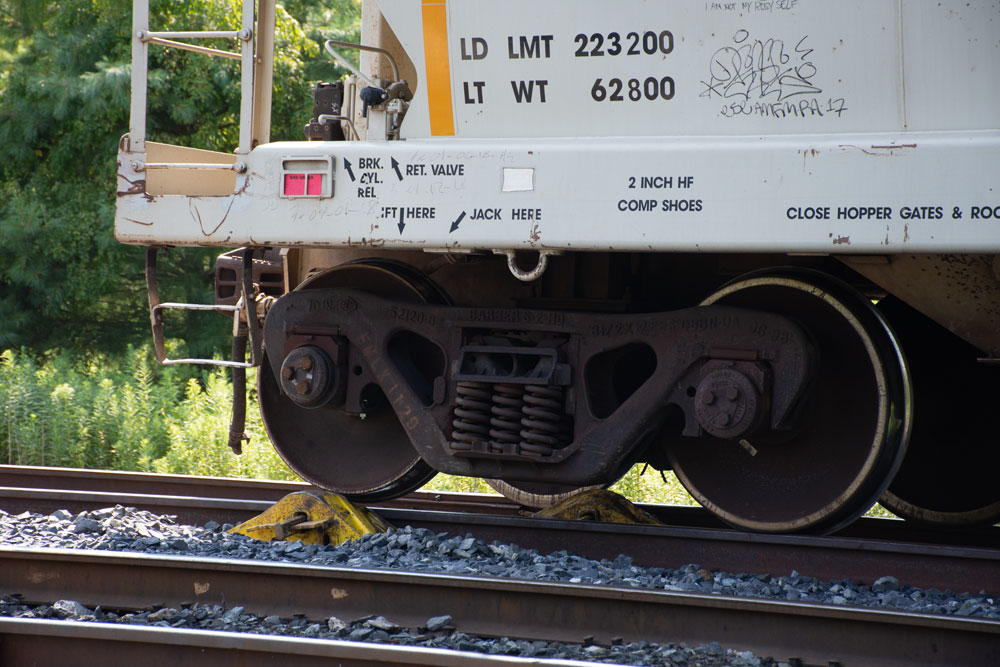
How to rerail a freight car: When things go bang that shouldn’t on the railroad, it usually means trouble and most likely a derailment. Derailments are a fact of life, and when one occurs on a main line of a Class I railroad, it usually results in many cars on the ground with extensive media coverage.
However, most occur in yards or during slow-moving switch moves, with one or two wheel sets leaving the track. It is these derailments that the railroad’s maintenance-of-way crews are usually tasked with fixing. I often wondered just how they go about getting a derailed car back on the track safely. On a warm August day, while photographing the Gettysburg & Northern Railroad, I found out how re-railing is done.
When wheels derail
On the Green Mountain siding, G&N conductor Don Talbert was riding a slow-moving shove of empty covered hoppers and was preparing to flag the crossing when bang, the car he was riding derailed and suddenly he found himself standing on the ballast. The train stopped immediately.
The trainmaster and MOW workers responded to the site to determine what caused the wheel set on the car Talbert was riding to come off the track. They found no track or equipment defects. It appeared the wheel set “walked the rail,” or rode on top, for about 15 feet before derailing. They decided the best way to rerail the car was to use wheel ramps. The derailment occurred just short of a public crossing, and with permission from the crew, I had an opportunity to see this process.
Rerailing the problem freight car
The first order of business was to set the handbrake on the derailed car and pull the unaffected empties to another siding. A red flag was placed on the rail and the MOW crew placed wheel fasteners to hold the wheel set to the truck assembly while rerailing. The wheel ramps were placed on the derailed-wheel side of each rail with clamps and a wedge securing them tightly. The clamps are necessary to keep the ramps from moving when the full weight of the car is pulled against them.
Inspecting a rerailed freight car
When everything was in place, an engine was backed to the car by the trainmaster/engineer. In a slow move with impeccable precision, all that could be heard was the coupler closing and the pin dropping as the engine coupled to the car, resulting in no movement of the car. The next task was to ease the car up onto the wheel ramps slowly enough that the process could be stopped at a moment’s notice.
The engineer slowly eased the car forward, stopping when the wheel outside the gauge contacted the ramps, when the wheels were on top, and when the outside wheel was walking back on top of the rail. The ramps are staggered so that when the outside wheel is on top of the rail, the inside ramp continues to guide the inside wheel flange against the inside rail allowing the outside wheel to drop back on the rail. All went smoothly, and with a good bang this time, the wheels were back on the track. The MOW crew removed the wheel fasteners holding the axle to the truck frame so the car could move freely once again.
The car then was moved to a different siding, bad-ordered to have the wheel sets checked out, and the track was taken out of service until it, too, could be further inspected.





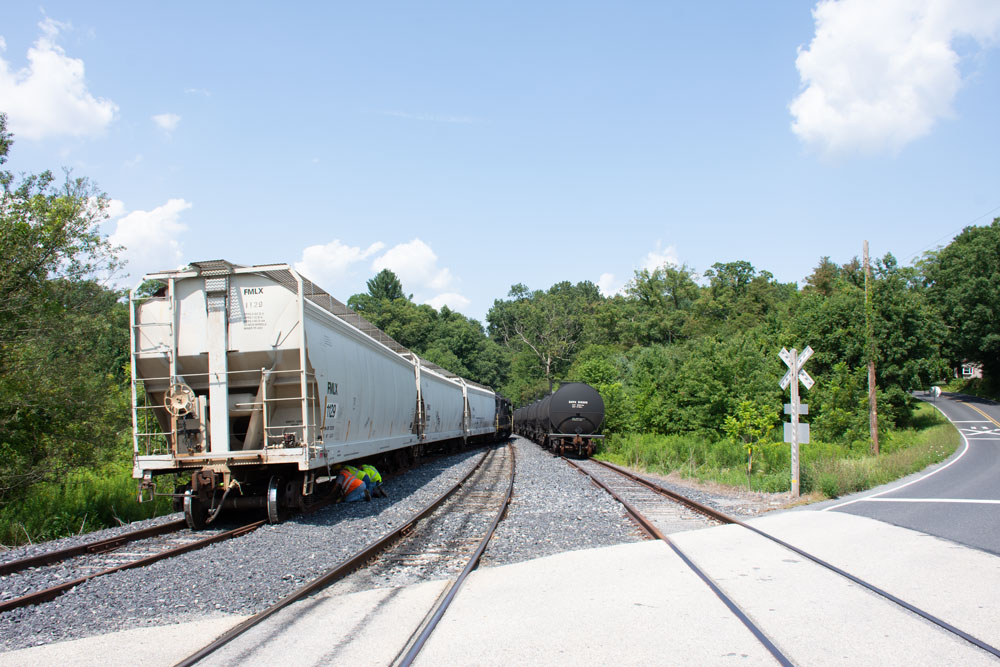

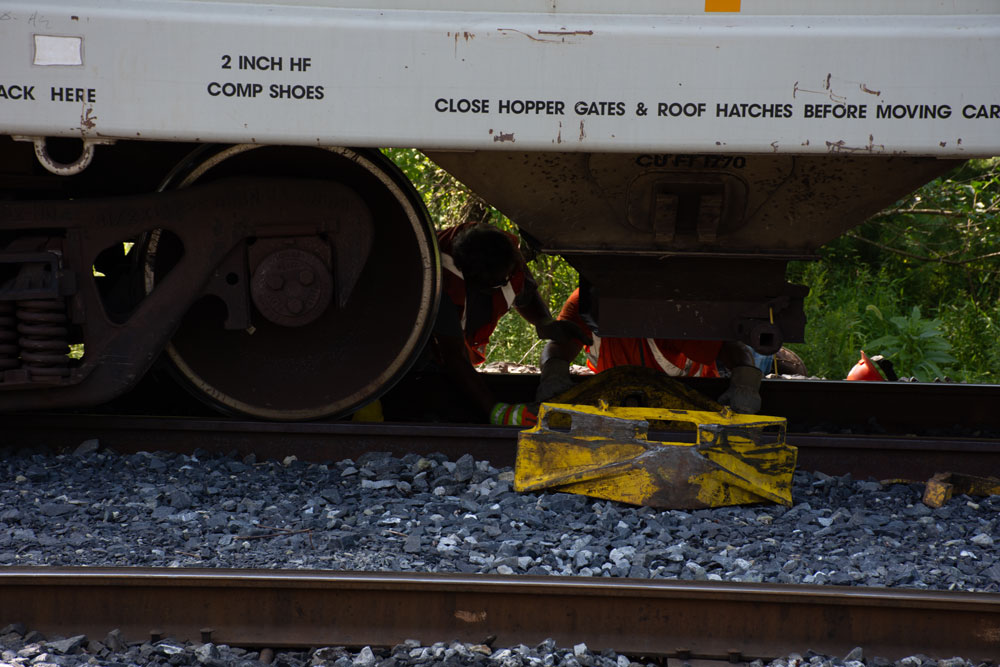

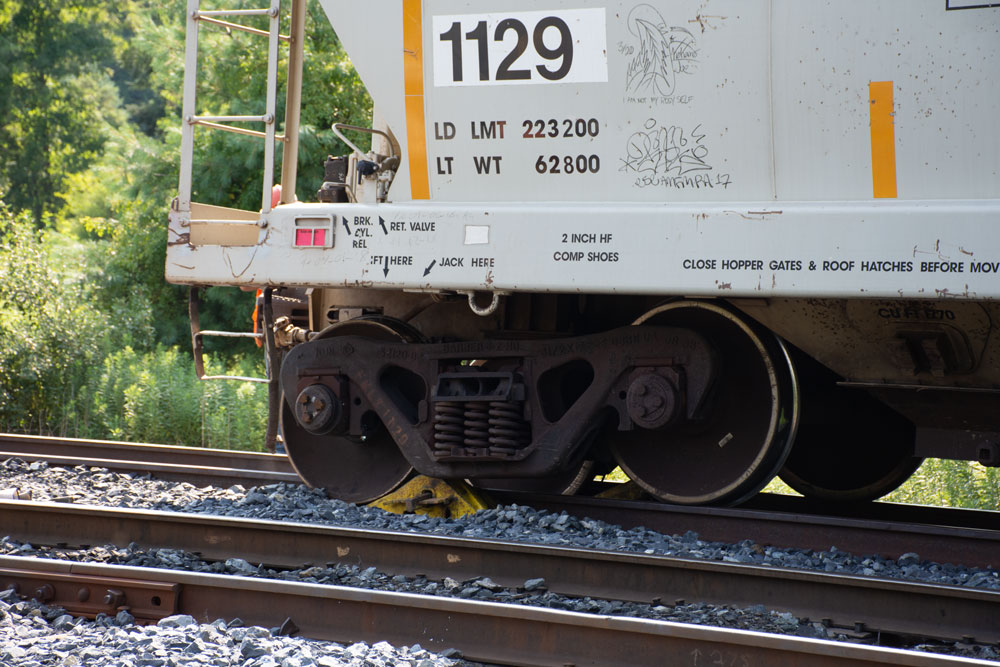


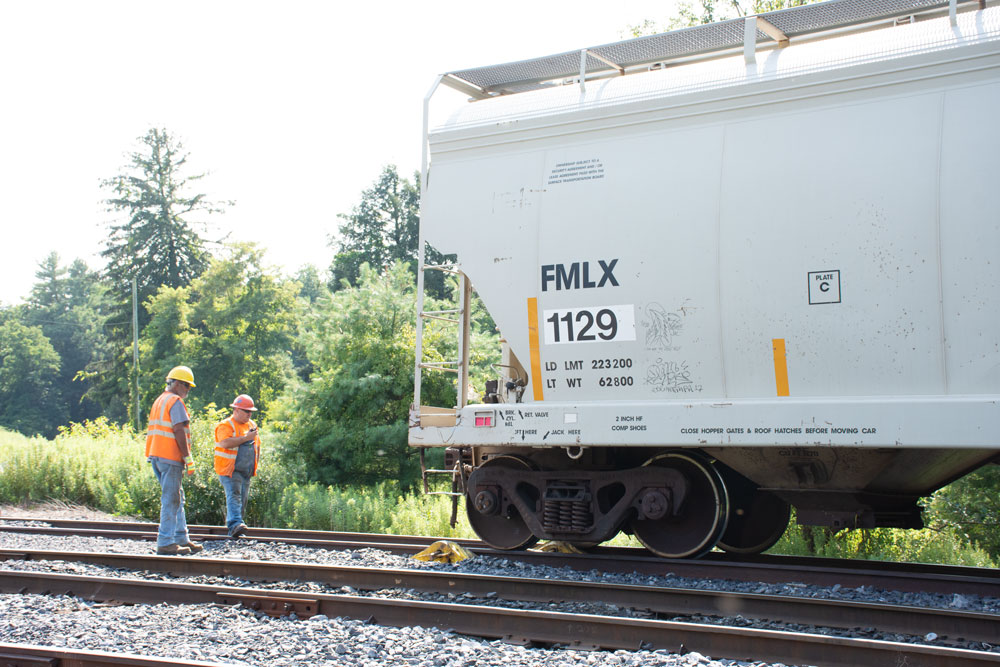

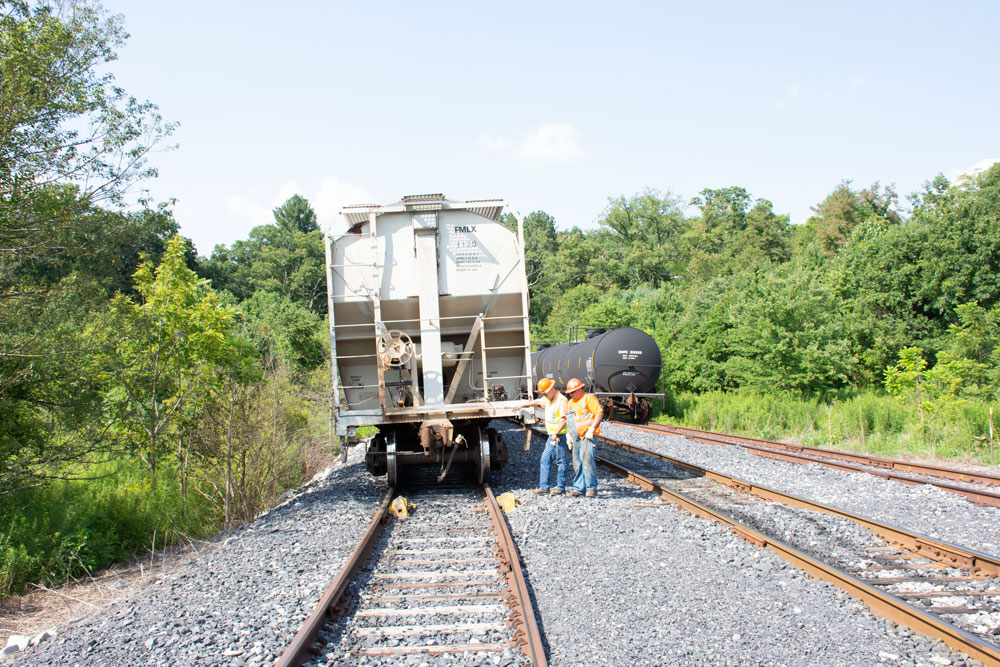


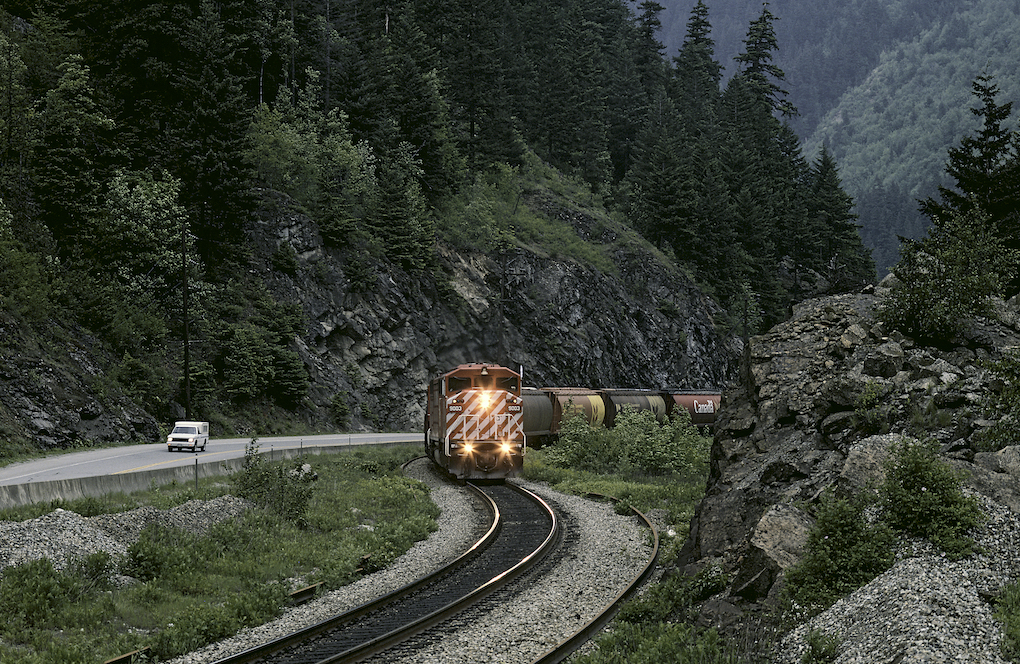
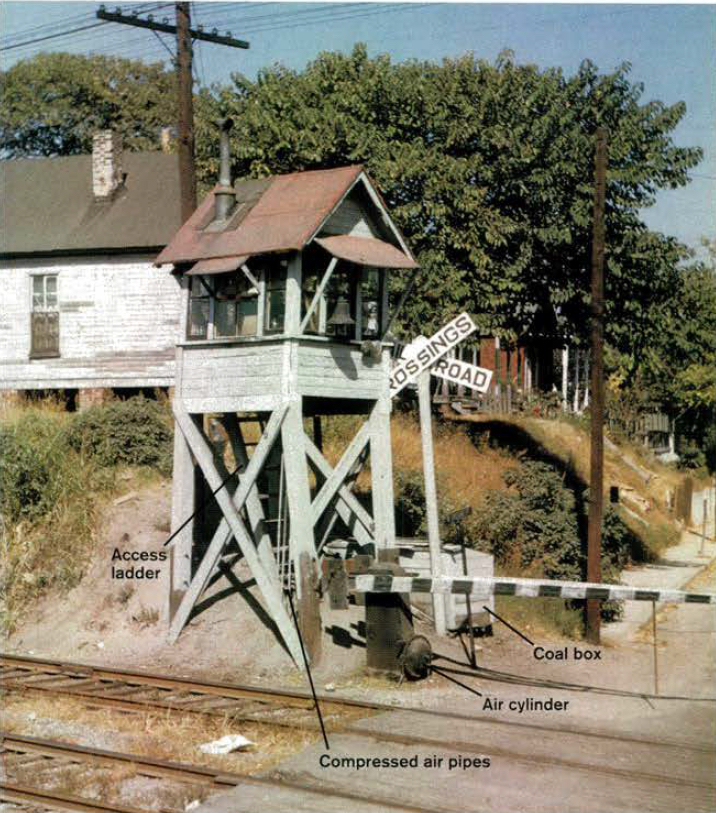
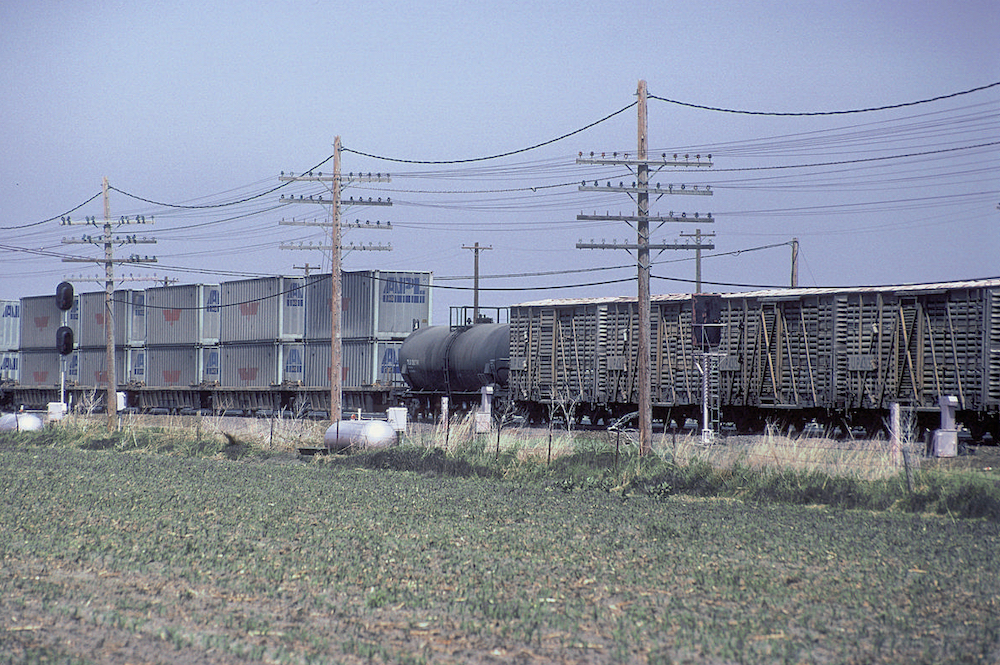
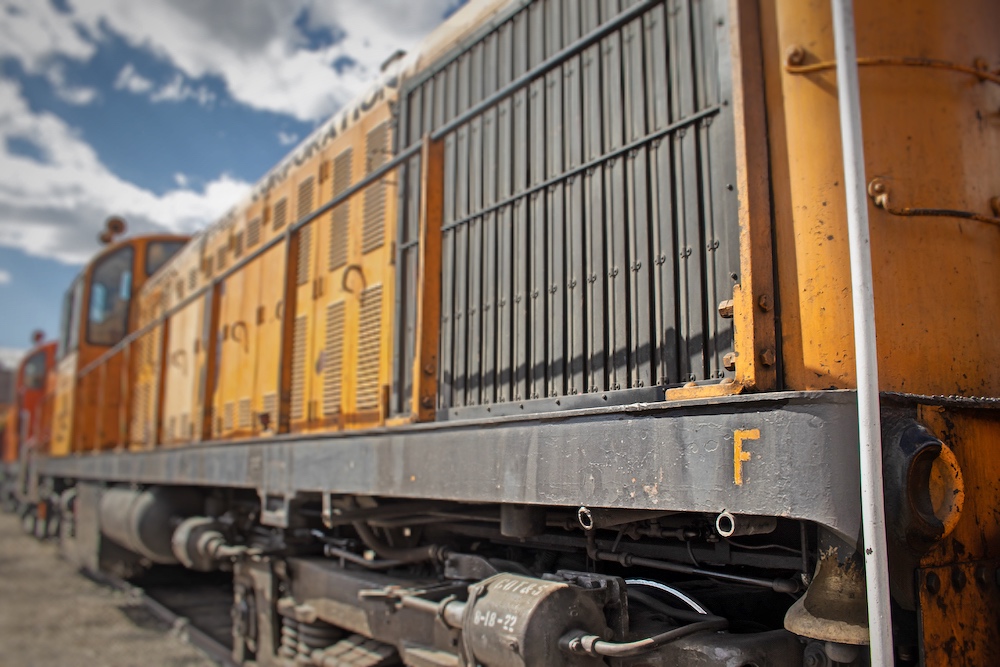




I’ve done a few rerails. Twice using the rerail ramps which often hung from the side of locomotives. Those ramps are heavy, best moved with a forlift or backhoe. Once we rerailed the front truck of a GP9 by building a ramp under the wheels from pieces of steel and joint bars. Another locomotive pulled the geep backwards and we got it up onto the rails. This process took much longer than using rerail ramps. Very satisfying to get the job done in any case. Fortunately, the derailed equipment was not damaged.
Very interesting & informative! Thanks
This is all well and good, but rerailers only work when you have good track. Most of the time a derailment tears up the track.
To rerail cars and locomotives in this situation, you must use many pieces of wood blocks and move the car up on the track about an inch at a time.
It’s a slow process that requires patience and experience.